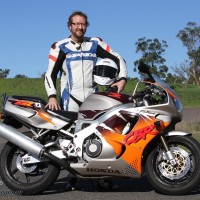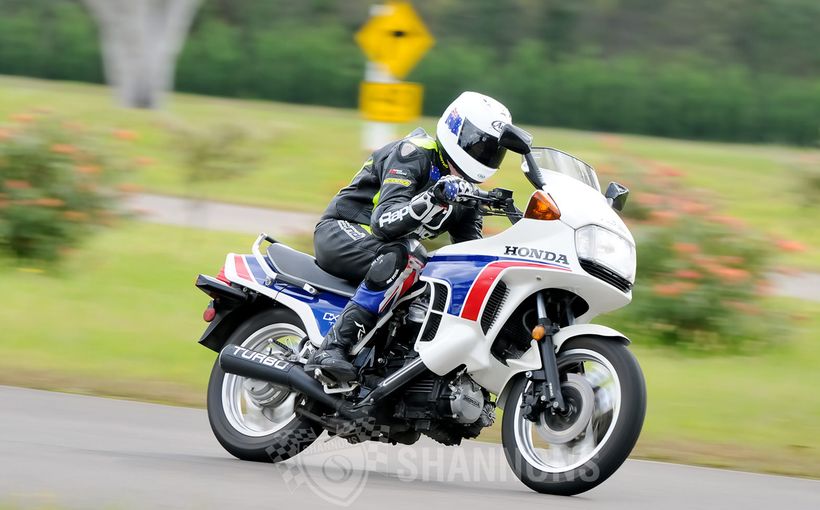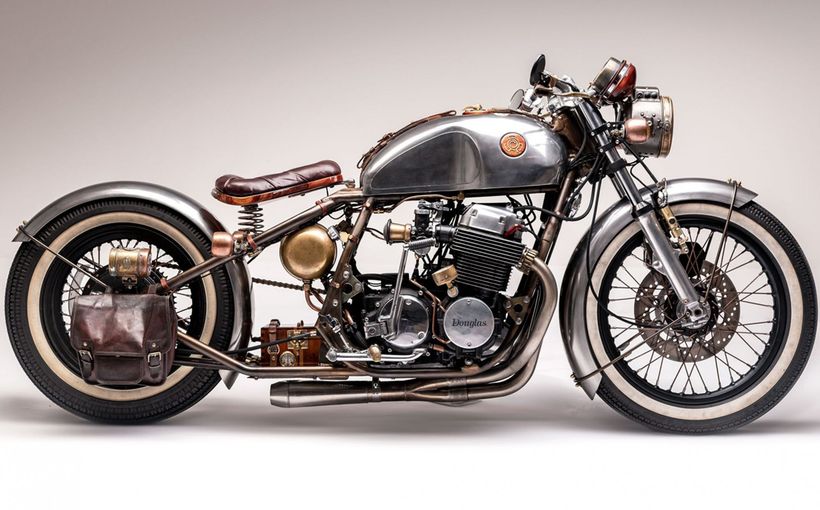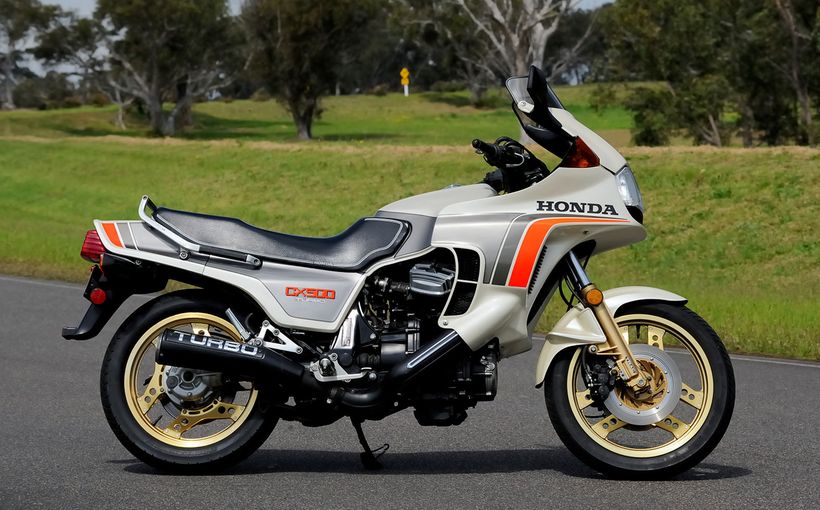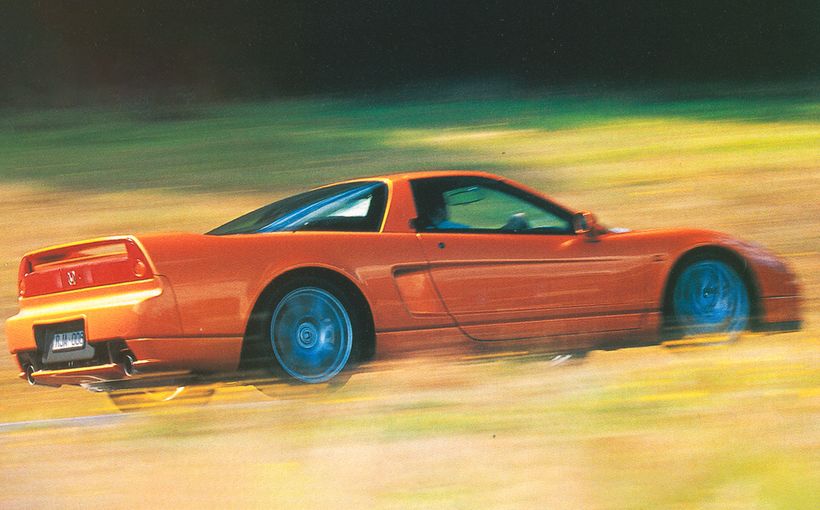Words: Jeff Ware Photography: Richard Collins

It’s no secret that I’m a big fan of two-strokes. Sure, I own a few four-strokes and most of my racebikes have had valves and cams, but my roots are firmly planted in two-stroke territory. My first dozen or so bikes were oilers, and I went from D to A grade racing RGV250s in the mid 1990s.

I was acting like a kid three days before Christmas in the lead up to this test, hanging to feel 19 again, getting that powerband rush, inhaling the luscious two-stroke fumes…

Rocking up to The Farm on a perfect sunny day to find an immaculate NSR is a mind-blowing experience. Close to six kilometres of tarmac perfection, brand new tyres, fresh kneesliders and a full fuel tank meant the day was going to be serious fun – not to mention an absolute blast from the past.

The MC21 NSR is one sexy machine, and I was really looking forward to riding it. I’ve heard so many stories about the sublime geometry and top end kick. Just looking at the bike I felt like a factory Honda 250 GP rider!


With a lot more technology than the RGV, including an ECU like that on the RC30 and geometry borrowed from the RS250 and NSR250 GP bikes, I knew the NSR would be good. The bike uses a PGMIII ECU that is coupled to a throttle position sensor and gear position sensor. With those inputs plus rpm, the ECU monitors and controls the powervales and ignition timing to give optimum performance. Very trick stuff for 1990!

Hopping on the NSR revealed a compact ride that feels like a true GP bike. Mechanically the Honda is quiet, and the throttle is crisp. The rattle of the dry clutch really gets me grinning – seriously – no modern bike can replicate this kind of buzz…


The NSR chassis is simply sublime. The front end is so planted that I feel as though I’m holding the front axle. Feel and feedback from the front tyre is confidence inspiring, the chassis reacts just as fast as the RGV to steering inputs, but it does so a more refined and stable way and the brakes are stunning.

In every level of handling and chassis performance the NSR is 15 per cent better than an RGV. The engine has better peak power than the Suzuki but surprisingly doesn’t quite have the same pull off the slower corners, which means overall on a tight circuit, the RGV would probably make a faster, although messier, lap time than the hi-tech NSR.

The mighty Honda geometry means the NSR makes good use of the sticky hoops, with lots of mechanical grip and no sliding aside from the odd front-end tuck into the slow esses, easily caught by digging the knee in. That’s the beauty of these old lightweight two-strokes. Try that on a modern heavy four-stroke and you’re on your arse….

The NSR is compliant in quick changes of direction and the suspension settles quickly when flicking from full lean angle to full lean angle.

Engine-wise I prefer the RGV. Despite the technology and top end, the NSR gearbox is a difficult shift and the lack of response at 8000-9000rpm gives the nod to the RGV.
Chassis-wise the NSR has it all over the Suzuki but both bikes are better than most modern machines. They really are from an era where us punters truly did benefit from grand prix racing. Long live the race replicas…

SPECIFICATIONS 1990 Honda NSR 250 R
Claimed power: 34kW[45hp]@9500rpm
Claimed torque: 33Nm@8500rpm
Dry weight: 132kg
Fuel capacity: 16L
Engine: Liquid-cooled 90° V-twin two-stroke
Bore and stroke: 54 x 54.5mm
Displacement: 249cc
Compression ratio: 7.4:1
Fuel delivery: Crankcase reed valve induction
Ignition: CDI PGM-II
Exhaust: Dual HM KV3H SANKEI 2284 mufflers
Ratios: 2.846, 2, 1.578, 1.333, 1.190, 1.083
Final ratio: 2.667 (40/15)
Clutch: Wet multi plate, with coil springs
Final drive: Chain
Frame type: Twin-spar aluminium frame
Swingarm: Alloy Gull-Arm swingarm
Wheelbase: 1340mm
Rake: 23°
Trail: 87mm
Front suspension: Telescopic oil filled damper with spring preload adjustment.
Rear suspension: Gull-Arm with external coil and damper, variable spring preload with Albach spring.
Front brake: Dual floating 276mm rotors with cast aluminium four piston calipers.
Rear brake: Single 220mm rotor with cast aluminium single piston sliding caliper.
Front wheel: Six-spoke aluminium Enkei, 110/70, 17in
Rear wheel: Six-spoke aluminium Enkei, 150/60, 17in
Front tyre: Pirelli Diablo Supercorsa
Rear tyre: Pirelli Diablo Supercorsa
Seat height: 770mm
Overall height: 1060mm
Overall length: 1975mm
Overall width: 655mm
Ground clearance: 135mm
Instruments: Analogue dash
NSR TIMELINE
1983 MVX250 – The three-cylinder MVX was Honda’s first attempt at two-stroke road bikes. The MVX had ATAC, an early powervalve system. Downfall was the crappy VT250 chassis…
1985 NS250R – The MC11 was made in 1985 and was the leading edge two-stroke 250. It was the first V-twin stroker proddie and had Astralite wheels, nicasil barrels and an alloy frame. 45hp@9500rpm and awesome looking!
1986 NSR250 – The MC16 was the first ever NSR. Everything was completely new. Initially only available in red, a blue version was released after six months. It had three-spoke wheels, a box section alloy frame and swingarm, was 20kg less than the MC11 and had RC exhaust valves.
1988 NSR250R – The MC18 was completely revised from its earlier brothers. It had high swept, six-spoke wheels. The MC18 is considered the closest of the NSRs to the RS250 racer.

1990 NSR250 – The MC21, the bike tested here, took the world by storm in 1990. It used the PGMIII ECU from the RC30 with TPS and GPS to give the ECU optimum control over ignition and the powervalves. It also had a new frame and the famous Gull Arm swingarm. Both wheels were 17in and the rear 4.5in wide. SP versions were released in Cabin Racing colours (Nobu Aoki in All Japan raced for the team) and had a dry clutch (as fitted to our test bike) and a close ratio gearbox. An SE version was introduced in 1991 with different wheels.
1994 NSR250R – The MC28, similar in spec to the MC21 but with the single-sided swingarm. It also had PGMIV, activated by a ‘Smart Card’. Each plastic card offered different levels of performance mapping. In reality, it was a clever system marketed by the Japanese but really was designed to restrict the bike to meet strict Japanese pollution laws. It was heavier and slower than the MC21.
The NSR continued unchanged until 1999. JHA then bought the remaining stock from Honda, which ran out in 2001.

Protect your motorbike. Call Shannons Insurance on 13 46 46 to get a quote today.


